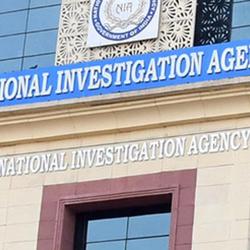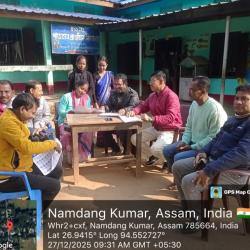Tourism is defined as a composite of activities, services and industries that deliver a travel experience to individuals and groups traveling away from their home for recreational, leisure or business purposes. Oxford Dictionary defines it as the commercial organization and operation of holidays and visit to places of interest.
Assam Tea, which has a rich history of satisfying its world admirers with its unique taste and flavour, has a rich heritage too which can equally satisfy the tourist community whether domestic or international. Assam Tea and the tea estates of Assam have many tourism aspects which the world community has already started to witness and cherish. Tea gardens of Assam with their lush greenery, the so called ‘green carpet’ with rows and rows of shade trees, the tea estate bungalows standing as relics of British colonial heritage, the tanned ethnic people with their distinct rhythmic music and dance carry potentialities to attract both domestic and international tourist interests and can present a magnificent revenue opportunity to the state.
Historically, Assam is the second commercial tea production region in world after southern China. Assam along with southern China is the only region in the world with native tea plants and ‘Assam is the only region in the world where tea is grown in plains’ (TBI). There is evidence of tea cultivation in Assam even before Major Robert Bruce is regarded to have discovered ‘wild’ tea bushes in Assam forests in 1823. In 1823, notable Assamese Maniram Dewan, listening to Robert Bruce discussing Chinese tea with a group of English merchants in Calcutta, approached and informed him that such a plant is cultivated in Assam by Singpho tribes (TBI). Maniram put Bruce in touch of Beesa Gam, a Singpho chief with whom Bruce came in an agreement to supply the plant and its seed against money (Baruah 2011). Later in 1834, Robert Bruce’s brother Charles A. Bruce got it confirmed that the leaves that the Singpho tribe brewed and drank is a different variety of tea and tasted almost like Chinese tea when dried(TBI).
Assam variety of tea, which is referred to as Assam Tea is scientifically called Camellia Sinensis var. Assamica. Its unique feature is its body, briskness, malty flavor and strong bright colour. Assam tea and blends containing Assam tea are often sold as ‘breakfast tea’. India, after being the largest tea producer of world for nearly hundred years has been very recently surpassed by China. Assam alone produces 16% of total world production which contributes to 54% of Indian tea production (TBI). Assam has 830 big tea estates with 529 estate tea factories mostly producing black tea. Assam tea is identified with the logo depicting a one horned rhinoceros. Assam orthodox tea is now a registered GI (Geographical Indication).
Tea tourism is such a wonderful and recreational commercial organization that can satisfy the taste of tourists’ interest. Tea tourism provides tourists the opportunity to avail all information and experience related to tea. Tourists can spend time amidst natural beauty of tea gardens, enjoy nature walk and trekking. Rafting and golf are also to be found. Tourists stay at luxurious tea bungalows, ensconced in the best of comfort. They can enjoy interacting with tea workers, partake in tea leafs plucking and participate in cultural festivals.
Tea Tourism has emerged as a very recent niche in the world tourism scenario. It has parallels with food related tourism such as wine tourism of European countries like France, which has enjoyed wide reclaim and investigation by many researchers (Demhardt.2003). Tea tourism in India, like in China, Sri Lanka, Kenya, Malaysia and Taiwan, is catching fast on popularity recently and increasing number of tourists are rushing to the lush green tea estates of Darjeeling, the Nilgiris and Assam. Since 1990 some tea estates in India have started accommodating guests in their bungalows flagging off tea tourism. In the year 2000 with India market opening up for cheap international tea, the stiff competition has turned some tea estates open up their campus for overnight guests chiefly as a means of earning revenue through a sideline business opportunity.
There are various new ways and areas where the tea tourism can be flourish with great extent. Some of these ways are mentioned below.
1. Bungalow culture- Tea estate bungalows of Assam carry a rich heritage being the relics of British colonial era. The Bungalow culture that the planters created in Assam in the 19th Century has its unique identity. The bungalows of Assam tea gardens have a signature style with its raised wooden platform (Chang Bungalow), spacious surrounding verandas, a low house having one or two stories, a fire place with a visible chimney, a spacious yard with arrays of flowers plants and trees located in the midst of natural surroundings. The planters, most of whom were English, Scottish and Irish in those days, tried to create a small world of their dream, using local architecture and material. Some of these type of bungalows are like Hunlal Tea Estate Bungalow, Thengal Manor in Jorhat, Mistry Sahib’s Bungalow of Gotoonga Tea Estate, Sangsua Tea Estate’s Burra Shib Bungalow, Bungalows of Balipara, Charduar and Basha Tea Estate etc.
2. Organic Tea Estates- Organic Tea has recently become a matter of concern to the health conscious community of the world. From last few years many planters of Assam have started practicing organic methods of tea cultivation and production. Health conscious tourists, from across the country and abroad, have started to visit these plantation sites to see the manufacturing procedure personally and interact with the planters, adding a new chapter to the tea tourism of the region. Few names can be taken in this regard-
a) Singpho Tea,
b) Madhupur Village Tea etc.
3. Tocklai Tea Research Centre- The Tea Research Centre at Tocklai has international tourist potential being a century old tea research institute, ‘the only one of its kind in the world’(Bedi 2012). It may be a centre of interest for students and research fellow from any place with tea interest.
4. Tea Tribe Culture- The tea tribe of Assam, an admixture of communities transported from various places of Bihar, West Bengal, Orissa, Andhra Pradesh, Madhya Pradesh, Tamil Nadu and Chota Nagpur region of Jharkhand, and their tribal cultures may be of research interest and attract tourists. Tea laborers, although have been made to adjust themselves with industrial discipline, they have retained their rural character till date which can matter of interest of sociologists and anthropologists. Tribal rhythmic dance forms and their music may enthrall any tourist of any place and age.
Tourism has occupied a significant position in the economy of a country of present era as an industry earning foreign currency and strengthening national economy. Development of tea tourism in Assam, besides sustaining the environment and preserving the heritage and culture, will benefit the state by creating employment opportunities and boosting rural economy and thereby alleviate the insurgency and other socio-economic problems. If the Tea Tourism is highlighted with proper planning and proper prospects, it can help the Govt. to earn much revenue and also create a new shape of the state like Assam in the map of the world tourism sector.
- 21396 reads










Add new comment